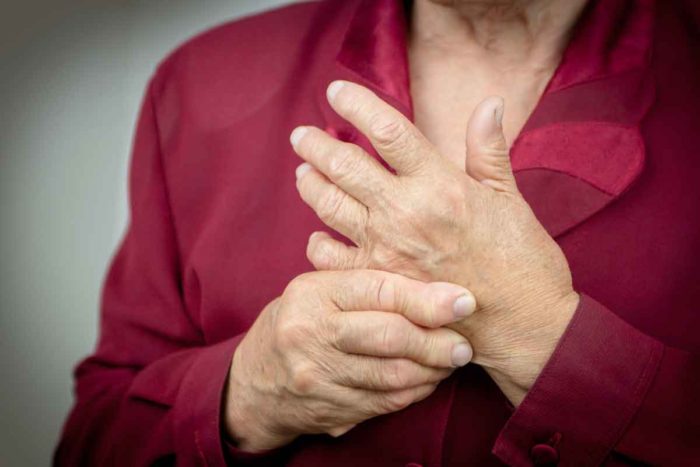Drug combination effective against chikungunya arthritis in mice
Findings suggest potential treatment for debilitating disease
 ThinkStock
ThinkStockChikungunya virus causes a painful, debilitating arthritis for which there is currently no treatment. A new study has found that combining a drug for rheumatoid arthritis with one that targets the chikungunya virus can eliminate the signs of chikungunya arthritis in mice in the early stage of the disease.
Combining a drug for rheumatoid arthritis with one that targets the chikungunya virus can eliminate the signs of chikungunya arthritis in mice in the disease’s earliest stage, according to researchers at Washington University School of Medicine in St. Louis.
The findings could lead to a drug therapy for the painful, debilitating condition for which there currently is no treatment.
“We found that combining these two drugs could abolish the signs of arthritis in mice during the acute phase,” said Deborah Lenschow, MD, PhD, an associate professor of medicine and the study’s co-senior author, referring to the phase in the first weeks after infection.
The study is published Feb. 1 in Science Translational Medicine.
Until about a decade ago, chikungunya virus, which is transmitted by mosquitoes, mainly was restricted to East Africa and South Asia. But in recent years the virus has spread around the world. The first case originating in the Western Hemisphere was reported in late 2013, and by the end of 2015, the virus had infected an estimated 1.8 million people in the Americas.
Chikungunya infection causes fever and severe joint pain, as well as rash, muscle pain and fatigue. The majority of patients continue to experience joint pain six months after infection, and for some, the arthritis continues for years.
“We were seeing people at our rheumatology clinic whose signs and symptoms really mimicked rheumatoid arthritis but who had been infected with chikungunya,” Lenschow said. “This raised the question in our minds, ‘Would therapeutics we use to treat rheumatoid arthritis be of any benefit to patients with chikungunya arthritis?’”
To find out, Lenschow, co-senior author Michael Diamond, MD, PhD, and colleagues tested a panel of six rheumatoid arthritis drugs – all approved by the Food and Drug Administration for use in patients – on mice infected with chikungunya virus.
All six drugs work by suppressing the activity of the immune system. Although different in many ways, rheumatoid arthritis and chikungunya arthritis both involve out-of-control immune activity in the joints.
The researchers injected seven groups of mice with the virus and three days later administered one of the six arthritis drugs or a placebo to each group of mice. A week after infection – when the mice’s arthritis signs were at their peak – the researchers measured the amount of swelling around the joints as well as the numbers of immune cells and molecules in the affected areas.
Two of the drugs – abatacept and tofacitinib – significantly reduced the swelling and the levels of immune cells and molecules. Importantly, the levels of live virus did not increase in the animals given the immunosuppressive arthritis drugs.
“There was a significant concern that administering any immunosuppressive drug would allow the virus to escape from immune control, leading to worse outcomes in the long term,” said Diamond, the Herbert S. Gasser Professor of Medicine. “We’ve seen that with other viruses, but in this case, none of the drugs seemed to exacerbate viral replication. This raises the possibility that these drugs can be safely investigated in humans.”
The treatment was only partially successful at resolving the arthritis, however, which led the researchers to test whether adding a human antibody against chikungunya virus could improve the effectiveness.
As before, the researchers infected mice with the virus and three days later dosed them with the arthritis drug abatacept, the antiviral drug or both. Each drug individually reduced joint swelling a week after infection. But when abatacept and the antiviral drug were used together, the joint swelling and the infectious virus in the animals’ joints were eliminated.
“We saw real improvement in the acute phase, but unfortunately, the drug interventions we tried failed to correct the chronic phase,” Diamond said.
In humans, the chronic phase of chikungunya arthritis starts three weeks after initial infection and lasts as long as the patient continues to experience joint pain, which can be three or four years. During the chronic phase, infectious virus is no longer detectable in the joints, but viral genetic material persists and may be sufficient to trigger an ongoing immune response, causing the tissue damage that patients perceive as arthritis.
The researchers found a similar pattern in the mice treated with the drug combination: By four weeks after infection, live virus was no longer present in the animals’ joints, but viral genetic material remained, suggesting that the drugs had not eliminated the chronic phase of the disease.
It is possible that a treatment that reduces arthritis symptoms in the first weeks after infection could lower the chance that the disease becomes chronic, but no data has yet been published for or against the possibility. Still, any effective treatment, even if short-lived, would be a boon for chikungunya patients, who currently have no proven treatment options. Lenschow has discussed beginning a human study with colleagues in Brazil, but plans are not yet finalized.
“In those first weeks, people are really very sick with a high fever and a lot of pain, so if further studies show that this combination treatment is effective in humans, that will have real benefits for patients,” Diamond said. “As for the chronic phase, we’re going to continue looking for other treatment strategies.”






